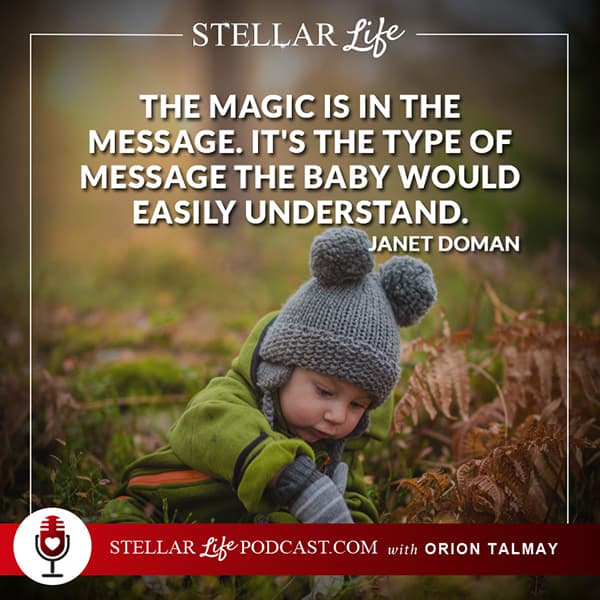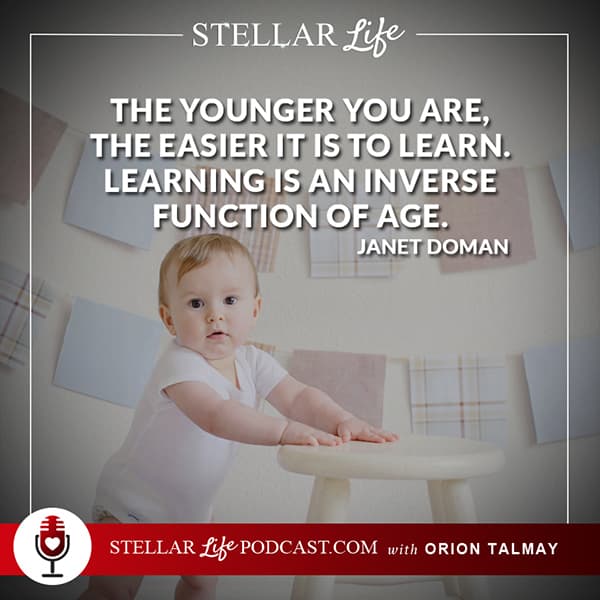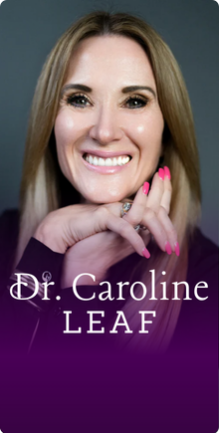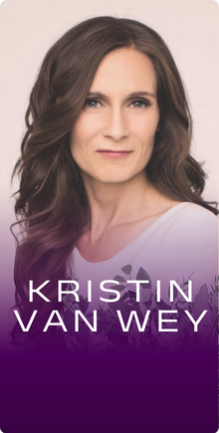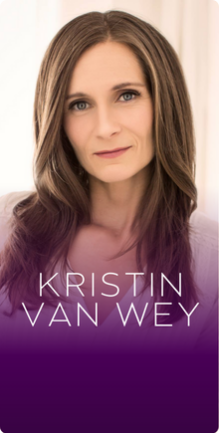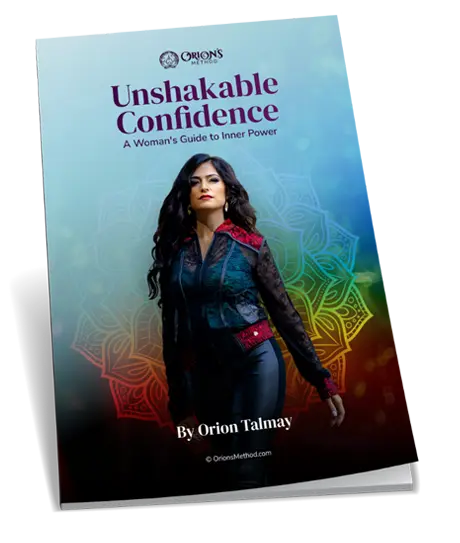
In this Episode
- [01:33] Orion introduces her next guest, Janet Doman, daughter of Glenn Doman, who founded The Institutes for the Achievement of Human Potential in 1955. Janet became the Director of The Institutes in 1980. She is the co-author of How To Teach Your Baby to Read, How to Multiply Your Baby’s Intelligence and How Smart is Your Baby?
- [03:47] Orion requests that Janet share about her journey and how she started in child development.
- [09:35] Janet gives a brief explanation of how her father cured and developed the brains of injured children in the 60s.
- [17:40] Janet expounds on how children can start reading at a very young age, even as babies.
- [23:33] Janet wants the listeners to understand that parents shouldn’t expect their babies to read right away during their training.
- [26:45] Janet and Orion share about types of physical stimulation for kids and how Mother Nature is a massive part of improving the baby’s intelligence.
- [34:05] Janet emphasizes the importance of having enough time for your children, especially in their first six years of life.
- [42:37] The power of a second language and ways to teach it for a child’s learning development.
- [46:20] The importance of permitting the baby to move and not be swaddled and establishing an environment that will benefit the child’s development.
- [52:31] Thoughts & discussions about the safest way in positioning the baby to sleep for proper posture.
- [58:49] Register for the free one-hour master class about early development by visiting iahp.org, and explore their resource section to find books, materials and get answers to your questions about child development.
- [1:00:12] Janet enumerates her three tips for living a stellar life.
About Today’s Show
Hey, Janet and welcome to Stellar Life podcast. It’s an honor and a pleasure having you here.
Well, I couldn’t be happier to be here.
My God, the things I learned from you changed my whole perspective as a parent about parenting and about my baby. Even though I was a pretty open-minded individual when it comes to my perspective with my baby’s ability, I always thought he is the smartest kid in the world, but still, I learned so much. We’re going to dive in and talk more about how to increase your baby’s intelligence and even how to look at babies.
Before we begin, can you share a little bit about yourself, your journey, and how did you become so fascinated with this topic?
I think in many ways, my life was inevitable. I was raised here at The Institutes. My father founded The Institutes in 1955. We came here when I was six years old. It was possibly the ideal time for us to change from a totally normal household and a normal neighborhood to this wonderful, wonderful place.
There's no deeper respect you can show a child than to help them realize their purpose on this earth. Share on XI just immediately dived into whatever my father was doing. I wanted to be there with him and my mother as well. At first, that was following them around while they were creating what was the first rehabilitation center in the state of Pennsylvania for stroke patients primarily, but adults 60-, 70-, 80-year-olds who had very severe neurological problems. I grew up with those patients.
Eventually, by the time I was 9 or 10, my father started to move from treating adults to treating children. Then I had both adults and little brain-injured kids living here. It was just an absolutely, utterly wonderful place to be. It was exciting. It was like living in an emergency room, but a happy emergency room where people were getting better all the time.
It’s true, my parents worked around the clock. But since I was allowed to be with them wherever they were, whatever they were doing, they always included us. I couldn’t have been luckier in my upbringing. By the time I was 9 or 10, it was very clear to me that I was going to spend my life doing this.
Wow, what happened in the mind of a nine-year-old when she came to this decision?
It was a funny thing. As it happened, the winter of that year of my life, we had a very severe snowstorm—26 inches—and that’s a lot for Pennsylvania. We had inpatients. We had lots of severely and profoundly brain-injured kids. Most of our clinical staff did not live on the campus, but my family did live there.
My father basically recruited our entire kitchen staff and then he literally went out where we are as a snow emergency route. He went out and recruited the men on the big snow plows that came down that snow emergency route. He said to them, “Look, there’s nobody coming out today. Get off the tractors, come in here, and help us save hurt kids.” He was so convincing that they got off the tractors and said okay. He came in and he put them to work.
I couldn’t have been luckier in my upbringing. It was evident to me that I was going to spend my life doing this.
When he was all done shanghaiing everybody he could, there still weren’t enough hands on deck. He turned to me and said, “Here’s what you’re going to do.” I remember exactly what I thought at that moment, and that was a thought that only a nine-year-old would have. I said, “Gee, I’m a staff member now. I thought you’d never asked.”
The snow had long gone, and I was still in the children’s ward doing parts of the program that I had been trained to do. I never stopped. In fact, when my friends would come over, I would take them in and say, “if you’re very well behaved, I’m going to teach you how to save a kid’s life. That was a very good litmus test for my friends because the friends who said, “Oh, this is wonderful, can I come back?” I always head back and the friends who said, “Oh, I don’t want to go in there,” that was a different thing. If there’s anyone on planet earth who’s had a better, luckier childhood than me, I have yet to meet them.
Wow, it’s very rewarding. It probably made you very mature very quickly and very empathetic as well.
I’m sure it did. I went to a small girls’ school. I think I was the only person on a scholarship for many years in that school. Most of the girls were very well off. I would come home and my brothers would come home from the boys equivalent of my school. I’m sure sometimes we said things that were frivolous or we got into silly squabbles.
My mother would just quietly say to my father, “Well, about that blind kid who was in this week, how’s she doing?” We would fall silent and remember where we were and those things would evaporate. You can’t do anything better for a child than to enlist them into the adult world of doing something life-saving and important. There’s no deeper respect that you can show for a child than to say, essentially, there’s a job for you here.
I think for my father, his crowning thing with us, I think he was a man who always said, there’s enough glory for everyone. I don’t have to keep it all for myself. He made sure that we always had a piece of that glory. We still all bask in that today, for sure.
There’s enough glory for everyone. I don’t have to keep it all for myself.
That’s a very, very important lesson. Very important lesson. Can you share with me what happened with the brain-injured children? How did your father cure them? What was the process? When did you start working with well children?
When we started with little brain-injured kids, we had a great deal to learn because all of our experience up to that time had been with adults. Those adults had been well until they were 60, 70, or 80 and had a stroke. That’s very different. It’s a very different case history than a little child who has been injured in utero, perhaps during delivery, or right after who by the time they’re three or four, they can’t move or they can’t make sounds and they never have done that. That’s a very different history than the history of a six-year-old who walked and talked for 60 years before there was an injury to the brain. So we had a lot to learn.
We used our time well in those days because we looked at how does the well-baby develop? What are the critical stages for the well-baby, not just what does he do? Because I think before us, what had been looked at in early development was to catalog everything that a baby does. What we had to ask was not everything, but what are the critical points? What are the critical stages for the baby because we had to replicate those stages for a severely brain injured child?
That was a very, at first, difficult exercise. But in the end, it yielded very good results because we created the developmental profile. That profile shows the growth and development of the brain from birth to its completion at approximately 72 months of age. It shows the critical stages for the growth and development of the baby. It shows all the sensory pathways into the brain, how they develop, how they should develop, and all the motor pathways coming out of the brain.
If we are remembered for anything 500 years from now, I believe it will be for giving the world that developmental profile because it’s a very wonderful evaluation tool where you can evaluate exactly where a child is—a well-child or her child—in the context of where he should be in his development.

Then even more importantly, that developmental profile shows you. If you look at it and say, “Well, my child is strong in vision but he’s not so strong in his auditory pathway,” it will show you exactly what you need to do to get him stronger, better, and moving along faster. That was the first thing.
The second thing that was very important was that by 1960, we decided that our hurt kids, by then, we had hundreds of two-, three-, four-year-old severely brain-injured kids on our program, we decided that it would be a very good thing if we began to teach them to read. We had a child, a very young, very hurt child who was reading. We were very impressed by the wonderful side effects of that.
How old was the child?
He was probably two when he started, by the time he was three and a half, he was a pretty good little reader.
We’re talking about a brain-injured child three-year-old and reading.
A midbrain injured child. By four he was quite impressive. We couldn’t look at him without saying, “Gee, if this little midbrain injured child can do this, we’re guessing all of our kids could do this.” So we began the process of creating a little program at first. When I look back on those early programs, I really laugh. They’re so small compared to the program we do now.
At first, just putting one foot in front of the other, we began to teach our two-, three-, and four-year-olds to read. We immediately found two things. First, it was incredibly easy, very easy. They uniformly, all the kids learned. The second thing we found is they absolutely adored it. It was by far their favorite thing in the whole world.
If you can’t read in school, you’re looking at 12 years of misery.
In the end, we became wildly enthusiastic about doing it primarily because we said, “Look, these are kids who have to get up every day and fight so hard for a living.” Here’s something that they’re really good at and that they love, so they deserve this. I think really that the fact that they could read was a kind of nice side effect of a program that really made our kids so joyous and so happy.
That began, and once it began, we had to start looking at the well kids across the street who were seven and eight years old and often failing to learn to read, and say to ourselves, why are our three-year-old brain-injured kids learning to read and the well-child is not being given this opportunity. If he fails to learn to read in school, pretty much if you can’t read in school, you’re looking at 12 years of misery.
In 1963, we booted my dad out and said, “You have a week, go write the book.” I think it took him two weeks, but it was difficult for him because writing is lonely work and he is not somebody who likes to be alone. But we held his feet to the fire. He wrote the book. He ended up taking it to Random House.
The editors at Random House absolutely loved the book. They realized how important it was because he would literally be creating the next generation of readers for Random House. The book came out and the book was a very big hit, not only here in the United States.
What book was that?
This was How to Teach Your Baby to Read. Not only here, but when it came out in Great Britain, it was even a bigger hit. I think this is because the British were a bit more literate than Americans, I’m sure they still are. We got hundreds of letters from the English moms when the book came out saying, thank goodness, somebody realizes that little kids are smart and can read.
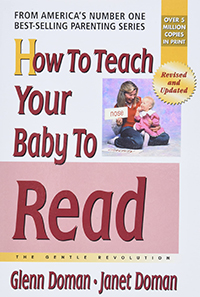
I taught my kid to read 30 years ago, and he’s a super reader and went all the way through college and university without any effort at all. We got a lot of letters like that from our English mothers. But I have to say to this day, the feedback on that book, and now it’s in 23, 24 languages, has always been amazing. What a little bit of teaching a child to read at an early age can have such a profound effect on the trajectory of a child’s life.
Why are young children so capable of reading at this very young age? How old is the youngest child that you taught how to read?
We start actually as soon as a child can differentiate detail. When the baby, and you’ve been through this so you know, there comes a moment when the baby can see mom’s face. If the mom smiles, the baby smiles back. The average baby, that’s probably three months. Our babies, it’s a good bit sooner because we give them visual stimulation from birth.
By three months, the average baby, if you make the print big enough, he can easily differentiate the word mommy from the word banana. The reason it’s so easy for him is that he is a linguistic genius. He is acquiring language at a rate that is truly astonishing. He is acquiring that language through the auditory pathway, but he’s equally capable of acquiring that language through the visual pathway.
The difference is that when we talk to the baby, we talk in a loud, clear, and repeated way. But unfortunately, 500 years ago when we printed the first book, we made the print very small so that the book would be easy to carry. That print is much too small for the immature visual pathways of the baby. If we make the print large, the baby can see the word banana just as easily as the baby can hear the word banana.
The brain doesn’t really care what pathway is used for information. The brain cares about whether the information arrives. The brain doesn’t care if it’s the taste of a banana, the smell of a banana, the auditory word banana, or the visual image of the word banana. To the brain, it’s all the same. The magic is the message arriving and the baby understanding the message.
It’s really quite easy to take all those familiar words that the baby is learning so rapidly, to introduce those words in a visual form just as you would say them. No one would think it was strange to talk to a baby. We do that naturally. Because we do that, the baby acquires language very, very rapidly. So we’re really just doing the same thing for the visual pathway.
Janet, can you take me through how you teach a baby to read? You show them the big card with the word banana and then what?
The magic is in the message. It's the type of message the baby would easily understand. Share on XWe might come back after the baby has seen the fruits, the vegetables that he’s beginning to eat. Maybe some of the things in his room that he likes, family members. Maybe we teach him hand, belly button, and bubble bath—the common things that are in his environment. Those are the words that mother is using all the time with him.
Once those have been introduced, then we can come back and if we want, we could make some couplets. We could say yellow banana and start introducing color because the baby, the brain, loves color. That would be easy to make couplets with color or we might just come back and say, big banana or little banana. Again, opposites are very easy for the baby to understand. Kids love opposites. That would be a good thing to introduce as well. Then very quickly, we can start doing a simple book.
Probably one of the earliest books would be a book about the baby himself. I like bananas. I like apples. I like pears. Each page is illustrated with a nice picture of the baby with an apple or the baby with a pear. The baby gets his first book very, very early on. We might even make single word books of more exotic things. It’s a very easy, natural process.
It’s really about common sense, more than anything else. Most importantly, it’s looking at the baby and making sure that the things we’re doing with him, he really likes. If he really loves flowers, we’re going to do more flowers. If he really loves dinosaurs, then we’re going to introduce dinosaurs.
We’re really on a quest from the minute the baby arrives to answer the question, who is this baby? Who are you and what do you want? To the degree we can, each day becomes an unfolding of that story. The mother gets to know the baby much more rapidly. She’s putting him on his own path.
It’s really about common sense, more than anything else. Making sure the baby likes the things we’re doing.
She’s not putting him on her path. She’s finding out who he really is, what he really needs, what he really wants. She’s paying attention to his choices. She’s giving him choices as early as possible. He’s in the driver’s seat, and then she’s paying attention to what he chooses, and he learns very quickly. It’s good to talk to mom because she pays attention to my answers.
It creates a healthier attachment with the parent as well.
A completely different relationship.
Wow. Just so the listeners will understand, we’re not expecting the baby to read it out loud back to you.
Absolutely not. First of all, we are talking about babies. They’re not yet able to speak in a way that you and I understand, number one. Even if you’re starting with a two- or three-year-old, we would never ask our kids to read aloud. First of all, it really constitutes a test. What does this say? That’s a test.
Little children love to learn. There’s nothing they love more than to learn. But just like you and I, they hate to be tested. They see the test as essentially disrespectful. What they get from a test is you don’t think I know this. Of course, that’s insulting.
We never test our kids. We never asked them to read aloud. Even when they can read rather well, we will not encourage them to read aloud because when you and I read aloud, we read much more slowly. When you slow down the reading process, you negatively affect comprehension. You jeopardize comprehension.
There’s nothing they love more than to learn. But just like you and I, they hate to be tested.
You don’t want to do that when you’re teaching somebody to read. You want them to fully comprehend what they are reading and get the most out of it. Anything that would slow down a child when they’re reading would not be a good thing. So we would never ask a new reader, a young reader, or a beginning reader to read aloud.
What’s the difference between the brain capacity to receive new information from a 10-month-old to a year old to a 6-year-old?
That’s a very good question. I think the answer is simply that the younger you are, the easier it is to learn. Learning is an inverse function of age. It’s easier to teach a four-year-old than a five-year-old. It’s easier to teach a three-year-old than a four-year-old. It’s easier to teach a two-year-old than a three-year-old. Yes, it’s easier to teach a one-year-old than a two-year-old. But each of those stages in development is different. A two-year-old isn’t anything like a one-year-old. A four-year-old is utterly different from both of them.
At each stage, you have to be sensitive to who you’re talking to. You have to be adapting to that new human being because every day that you and I wake up, we’re pretty much the same. But every day a little child wakes up, he’s different. He’s changing all the time.
Yes, wow. I just think about my baby. He just grows so fast.
We like to get into a nice rut. Find the thing he loves and then do it again and again. That’s fine for about two days. Then he’s looking at this like, I think we’ve done this before, let’s move on. That’s the hard part for you and I.
What do you do to give him more stimulation? I know the result of that, the physical aspect of increasing your baby’s intelligence.
Not all times in a child’s life are the same and can be dealt with the same way.
The physical part of our program is gigantically important. As I said, not all times in a child’s life are the same and can be dealt with the same way. A six-month-old will have incredible attention, interest, focus, concentration on things intellectual. He’ll love reading words. He’ll love pictures of beautiful things. He has great attention.
That same child, if you come back at 14 or 15 months, is in a totally different place. Now he really doesn’t have time to look at 50 reading words, 50 pictures of something, or even time to sit through a book. He’s on the move, he’s on his feet. His life is now essentially focused on all things physical.
Mother Nature has got to develop his safety on his feet. From the moment he wakes up to the moment he goes to sleep, he is pretty much focused on being in motion, on developing his balance, developing his speed, and his skill. So we have to adapt his program. The program that was great for him at 6 months would not be great for him at 15 months.
We have to make a safe environment where he can do all the physical things he needs and wants to do, but safely. Padding out the living room floor next to the sofa because he wants to roll off the sofa 400 times or making the bottom of the stairs safer because he wants to jump off that bottom step and it’s just not safe for him to do so. What we would say is don’t prevent his development, but create a safe place where he can continue to do all the things physically that Mother Nature is really demanding that he do.
For me, it was very important to have my baby connect to nature, connect with animals, and long walks in nature even when he just started to walk. We had a park near our house and a small hill. I would take him every day up the hill. The first day he could only go so far. A few days later, he was able to go a little higher. I would see him trying to challenge himself. It was really cute interacting with dogs, lizards, and whatever animal, plant, stone was there because I feel like they learned so much from walking in nature and connecting to what’s real.

We live in a very fake world. We live in a box, drive in a box, and meet other people in different boxes. We’re not outside enough. We’re not connected to Mother Earth enough. It was important to me to take him to petting zoos when he was tiny, tiny, tiny. They’re like, are you sure he’s going to enjoy it when he’s that tiny? I’m like, yeah, yeah, yeah, it’s going to be great. Just to instill with him that love for animals and a respect for the earth.
I’m 100% with you. All the students who I’ve ever taught, they know that I’m an animal lover. I told every student I ever taught in my class, if an ant comes across the carpet, you help them to a safe spot. You do not harm him, you do not inhibit him, you do not capture him.
I found over the years that one of the wonderful things about a really good encyclopedic knowledge program because so much of that program begins with all things natural—reptiles, birds, mammals, flowers, trees. Once our kids really get a chance to learn the names of things, it completely changes their idea of the world in which they live. I’ve seen these hundreds of times in our kids.
If you know that that’s called a little black ant, that’s a bumblebee, a northern golden bumblebee, or that’s a giant walking stick, then you automatically have respect for that there. That’s your friend. Not only would you not harm that insect, but you won’t allow anybody else to do so either. So I think that it’s a very strong proof that knowledge leads to good, not the reverse.
You’re right, our children today have so little contact with nature. This is even more true right now than it was even five years ago because of all the electronic devices. I meet children now who have never climbed a tree. I meet children who have never taken off their shoes. When I was little, from April to October, we didn’t wear shoes. We couldn’t wait for the first day of April that was warm enough where we could take off our shoes and leave them off.
So I think that it’s solid proof that knowledge leads to good, not the reverse.
If we want our children to take care of this gorgeous, gorgeous Garden of Eden that we live in, then we have to introduce them to that garden as early as possible so they’ll have the respect and the love for it that is completely natural. If we have that database for them that they know what that insect is called, that reptile, or that flower, then it’s a very, very different thing. I think all the things you did intuitively are exactly the right things and can be tremendously enhanced and expanded with the reading program or the encyclopedic knowledge program.
One of the things that I loved doing as a child was to read. As soon as I found reading at age six like everybody else, I would read every weekend. I would finish a book. I would just read and read, go to the library, and read more books and more books. I think I was maybe 9 or 10 when I asked for the natural encyclopedia as a gift.
I would just sit and I would go over an encyclopedia and learn about all those animals from all over the world. It was my favorite thing to do in the world. I used to be in the backyard barefoot. I’m from Israel, so lots of stray cats. I would see the cats and kittens. I would pretend that I’m Tarzan, climb trees, and watch the animals. It brought me so much joy and I want to give that to my son as well.
I think that one of the great things that are happening when a mom gets to teach her child early is it’s really the beginning of a lifelong relationship that just gets stronger and stronger and stronger. I think one of the sadnesses of modern life, when mothers don’t have that time with the baby or that they don’t know that the baby can learn so much. The baby is loved and taken care of, but not really stimulated very much. In those households, mother and baby don’t really get to know each other until much later and sometimes until too late.
If you don’t have enough time for your children until they get much older, by the time you do have time, they don’t have much time for you. I think that this early first six years of life, this is the precious time when mothers, fathers, and kids really deserve to be cocooned and absorbing everything they can from each other because that’s going to be the thing that lasts for their whole life. That’s what life’s all about.
The younger you are, the easier it is to learn. Learning is an inverse function of age. Share on XNice. You mentioned Bits of Intelligence a little bit. What are Bits of Intelligence? Why is it so important to flip through them so fast?
We learned again with our hurt kids, that we began to look at the brain-computer analogy. We’ve always had a lot of computer people here at the Institutes. We’ve always attracted the early computer people. They’ve come to learn about the brain because they’re interested in self-regulating systems. The brain is the ultimate self-regulating system.
We were interested in how they teach the computer. We asked many questions about this in the early days. We found that the computer people were very careful about data that went into the computer. They said it has to be precise, it has to be discrete one thing at a time. It has to be unambiguous. You have to use the correct specific language. You must be very careful not to put corruption into the database because that will cause problems.
The more we listened, the more we understood what they were saying. We had to look at children and say, well, how do we provide a database for our kids? We’re doing this very careful job with the machines called computers. But if you really look at how a child acquires data, especially in the first six years of life, it’s pretty much by accident.
It’s very rare that somebody sits down and says, well, here are the basic things that you’d need in a database. In the first six years of life, that doesn’t happen. This is really the food of the cortex just as the body needs food. We take time and energy, and we’re very careful about what broccoli we pick, how we wash it, how we cut it, and how we steam it just for the right amount of time so there’s lots of nutrients. We even put it on the plate very carefully.
Maybe we take a taste of it and say, oh, broccoli, this is so delicious that we can say to our childhood, let’s eat something really healthy because we want the body to be strong and to grow and be healthy. But we should have the same concerns about the cortex, which is also growing and which also needs food. In fact, what happens, the cortex pretty much gets everything by accident.
The more we listened, the more we understood what they were saying.
Imagine if we fed our kids by accident, we just said, oh, I’m a little busy today. I don’t think we’ll go shopping. We don’t need to eat today. We can eat tomorrow. What if we just send our three-year-old out in the back of the house to say, I know you’re hungry, go out and see what you can find. This is unthinkable. Mothers spend huge amounts of time on feeding the body. We’re saying we should spend an equal amount of time, if not more, on feeding the cortex. Because if a three-year-old has a choice between intellectual stimulation and eating, he’ll take intellectual stimulation every time.
Basically, when we looked at this, we started to create little mini databases. We began with birds because we’d happen to be able to find them. So we made beautiful bird Bits of Intelligence big, clear, accurate pictures. We found our kids love them. We did some insects and we found they liked them just as well.
We went through the animal kingdom as you can imagine and at some point, and this is funny because sometimes you learn the most important things when you get desperate, we ran out of animals. We just didn’t have any more books to cut up for our kids. So we went to the bookstores and often in the bookstore, there are books for sale. They’re very frequently art books because they’re expensive, they’re large, and they’re very sophisticated.
They were inexpensive. They had beautiful pictures. We took some art books. Maybe it would be a book of Picasso, a book of Rembrandt, or maybe Cézanne. We took them home and we started to make beautiful sets of these masterworks. We found that our children just adore them. They couldn’t get enough.
Even though we had gotten them out of desperation, we learned rapidly that these beautiful, beautiful works from around the world were deeply touching to our kids. From that day, 45 years ago to this day, we’ve just been expanding and expanding. There’s very little that our parents haven’t tried at this point and that some kids somewhere haven’t said, oh, this is my favorite, mom, I love these.

Right. We got all the Bits of Intelligence that you offer from the Institute. We got them, we bought them. David is just loving them. He is just so excited about it. He loves it. I have two questions. One, would it be wise just to put the word, the visual word with the image and so he can learn the animal, what it’s called, and how to read it?
We certainly think that is a good idea. We had the option. When we printed the bits that we have published, we had the option to put the word right on the back. The handmade ones that we made here, that’s what we did. But when we went to make the published ones, we had by then learned that the next step after teaching the name of the bird or the name of the reptile is that kids want information about them. What does he eat, mom? Where does he live? What does he sound like?
We know that once kids start asking those questions, it’s a huge job for a mother to find out the answers. We opted, instead of putting the name on the back in big print for the child, we put 10 facts on the back of each one so that when mother gets asked those questions, she immediately has an answer. Of course, it makes mom look like a genius that she always has something clever to say. But yes, you’re right. In addition to that, if you’re showing a pileated woodpecker having a big reading word, that says pileated woodpecker is a very good thing and kids love that.
Cool, good. Thank you. Thank you for clarifying that. Right now my son is bilingual. He speaks both Hebrew and English. Hebrew is even stronger because we spent some months in Israel before we moved back to the States. If I want to take on Spanish because we moved to Florida and I need Spanish, how do I teach my son Spanish when I don’t know Spanish?
First of all, you’re bilingual and he’s bilingual.
I also speak Japanese and a little bit of Arabic.
You’re quadrilingual. You cannot underestimate the power of that second language. People who are bilingual have much, much, much more stimulated language areas of the brain. So when they go to learn that third language or that fourth language, they can do so much more easily than those of us who are stuck with one language. It’s a huge gift to have two, three, or four languages.
First of all, I don’t think it’d be very difficult. Secondly, I think you just approach it by combining what you’ve learned in the reading program because it’s very powerful when you’re learning a new language to teach your child to read in that language. I taught 750 Japanese mothers in Tokyo how to teach their two-year-olds English. I did it almost entirely through teaching them how to teach their babies to read English.
We know that once kids start asking those questions, it’s a massive job for a mother to find out the answers.
By the time they were on the program for about a year, most of those kids were reading in English at a first or second-grade level. They still didn’t read in Japanese because no one had taught them to read in Japanese. I think really leaning heavily on the reading program helps a lot. I think you can also lean on encyclopedic knowledge so that you actually take a more common set of bits instead of bits that are exotic. More like the common thing—a chair, a lamp, a table. You would never use those as bits because your child knows those things in his native languages, but you would use those to teach a third language.
The great advantage to that is you don’t have to translate. You just hold it up and say the word in the language because the kid is looking. He can see it’s a chair. I think that’s a great advantage to not have to translate.
Wow. I’m getting a little stressed out, actually. Honestly, I’m just thinking about teaching him a third language. What if he’ll get confused and mix all the languages. People will come to speak with him in English and he’s going to answer in Hebrew or in Spanish?
That won’t happen. The only languages that will confuse him or you will be the ones you don’t speak. I think that one thing you can do is put your different reading programs in different colors. Maybe Hebrew is in red, English is in blue, and Spanish is in orange. That’s nice, just use color so you can keep everything in the right pile. You will find that your child is very good at knowing who he needs to speak what language to.
Nice, wow. This is more for the new moms and dads that are listening to us right now. Why do we need to teach an infant to crawl on an inclined ramp instead of swaddling them for example?
Thank you for this question. There’s almost nothing more important that we could say than right at birth, the baby needs to be permitted to move. When babies are born, they can move, they can crawl. If they’re given the opportunity at birth, they will move right up the mother’s body to the breast. The Inuit people in Alaska have had this custom for probably thousands of years, certainly hundreds of years.
Don't prevent your baby's development, but create a safe place where they can continue to do all the things physically that Mother Nature is demanding them to do. Share on XWhat do we do in Philadelphia, PA when a baby is born right now, we take the poor baby, we bundle him not once, not twice, not three times, not four. Five blankets are wrapped around him so tight that from the neck down, he is paralyzed. If you take a look at the look on the baby’s face when this is done to him, it is not a happy look. That baby, for nine months, could move.
While he couldn’t move freely, he could move a lot more freely in utero than he can move if we bundle him up in five blankets and he can’t move at all. It is a travesty to do this to the baby. Honestly, it almost verges on criminal stupidity to take the baby and absolutely prevent him from moving, paralyzing him from the neck down.
I did that, and I didn’t know better. I thought, oh my God, I’m doing the best thing for my baby. This is what everybody else is doing. There are experts in books that tell you to swaddle them, it makes them comfortable. They feel like they’re in the womb. Actually, when I did swaddle my baby, he slept a little better. What do you think about that?
I think, of course, the baby sleeps. What are his options? If I did that to you, you would sleep. But for me to make it a virtue of that, see, it goes back to the thinking way of the first 12 months of life. Basically, if we see the first 12 months of life as okay, the baby, he doesn’t understand anything, and he can’t really move.
There’s really not much to do with him. The more he sleeps, the better because then I can get my work done. Then he’s not crying and then I know he’s okay. It’s all about putting him in a wheelchair, bundling him up, and hoping he’s going to sleep. It’s the same thing we do to the elderly. We put them in wheelchairs, bundle them up, and medicate them. Then they’re not such a pain in the neck. They’re not complaining.
Honestly, babies should be interviewed and asked, would you like to be paralyzed from the neck down or would you prefer to be moving freely at will? Because I think if you ask 10 total strangers, which do you think you’d prefer, I’m going to paralyze you from the neck down or I’m going to let you move anywhere you want and you can move freely? I think this is what’s commonly called a no-brainer. Babies have a birthright to move. Preventing them from moving is the worst thing we could do because we convince them that they can’t move.
If we want our children to take care of the Garden of Eden that we live in, then we have to introduce them to that garden as early as possible. Share on XThe modern baby is prevented from moving because he is bundled up, then he is put in a car seat, then he is put in a pack on mother’s back, and then he is put in a car seat and tied in, he spends most of his day immobilized when he needs desperately to be able to move. When he can move, he does move. The more he moves, the deeper he breathes, the more oxygen he gets to the brain, and the more he develops his vision because he starts to look where he’s going.
The better his vision gets, the more he sees and the more he wants to move. This is the natural process of development. It would be exactly like everyone saying when the baby’s born, put them in a pitch-black room because you know he’s going to sleep much better if you put them in a pitch black room. By the way, he will. What will be his options?
It’s the same thing, only, we’re now depriving the visual pathway the way we’re depriving the mobility pathway. Instead of that, he should be put in an environment that is user-friendly. We should be saying not what’s good for us and not what’s convenient for us. We should be saying in the first 12 months of life, we must create an environment for the baby, a user-friendly environment that will benefit his development from the moment he wakes up to the moment he goes to sleep and even while he’s sleeping.
That environment for the newborn is a beautiful, smooth, warm, clean floor. In this case, the baby crawling track allows him to have his own clean, smooth, warm floor. If we elevate that floor, we will make it even easier for him to be able to—any movement he makes will help him move down that inclined baby track. He will realize, aha, I can move. I can get myself from point A to point B all by myself.
By the time our babies are 2 ½, 3 months old, they may be doing between 400 and 500 meters of crawling every day. Do you think those babies sleep well? They certainly do. They sleep the sleep of honest fatigue? Do you think they eat well? Of course they do, they’re hungry. Do you think they have big chests and they get more oxygen to the brain? Yes, they do. Do you think they’re healthier? Yes, they are. Everything improves when we get the baby moving.
An environment for the newborn should be a beautiful, smooth, warm, clean floor.
Wow, this is so powerful, so powerful. I wish I knew that earlier. As a new mom, everybody scares you and they’re like, you have to put him on his back. He needs to be on his back. He needs to be on his back or he can die of SIDS in a mysterious way. I know that for thousands of years, babies were put on their tummy going to sleep. In the last however many years, this is the wrong thing to do and not the recommended thing to do.
I put him on his back and he developed this awful flathead. I didn’t want to put a helmet on him. I would just put him on his tummy for hours and hours and hours on end because I want him to—we also did a craniosacral massage for the baby, which was very helpful. But I had him on his tummy for many, many hours as much as I can.
Then sometimes, I had him sleep on his side because this can develop into brain damage if it becomes too severe. What are your thoughts on that?
I think your instincts were all correct. If you look at the earliest papers that were written probably now, give or take 5 years, 20 years ago, even when the advice was given radical and unproven at the time to put babies on their backs, they said in that earliest work, except if the child has a neurological problem. The child is brain-injured, you must leave him on his belly. It would be unsafe for him to be on his back.
That is a very curious PS in that article that they were not willing to make the radical change for the severely brain-injured child. The statement that that might be unsafe for the brain-injured child is nothing more than the truth. It would be very unsafe. By the way, the contention that it was sleep position that was the causative thing in SIDS has not been proven.
I have my own theory of what causes SIDS, but I’m not going to get into that right now.
If you look at the literature, you will see that it’s one of those things that got started and then it turned out that it wasn’t really true, but nobody went back and corrected it. If you look up SIDS now, you will not find that there is great literature and proof on, oh, it’s all about the sleep position. They have moved away from that. They have moved on to other issues.
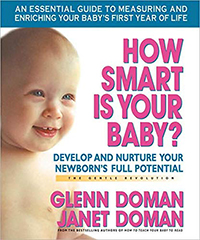
Again, I think your instincts are correct. There is no reason, absolutely no reason. From the moment a child wakes up until he goes to bed at night, there is no reason at all why that child should be on his back. He should be on his belly, free to move, supervised, of course, every second, that goes without saying. But absolutely, he should be on his belly. It’s really for mothers to decide what they think is the safest sleep position.
There were many, many, many pediatricians 25 years ago, when they first came out with this advice, who thought it was terrible advice and said so. Because of their age, they’re dying off and they’re being replaced by doctors who were born into a world that they were put on their backs. It’s a scary thing, but you’re right to keep your child on his belly from the moment he wakes up to the moment he goes to sleep because this is the natural posture for a baby.
This is the posture from which he can move forward. This is the posture from which he can breathe more easily. This is the posture where he’s not going to, if he vomits, he’s not going to aspirate his own vomit. We have a very good article done by Dr. Ralph Pelligra on this subject and we include it. I think you probably got it in the course. It’s really worth reading. It’s pretty straightforward. He makes a very strong case for some of the dubious points that were made 25 years ago.
Wow. Janet, I have so many more questions for you like how do you teach your kid math and music. There’s so many more
Language development, I got into that a bit with your husband and it is a favorite of mine as well. We’ll just have to talk again.
By the way, listeners, you can go to Get Yourself Optimized and find Janet Doman’s episode there. That episode was mind-blowing, outstanding just as this one is. You shared different knowledge there. If you want to listen to more of Janet’s wisdom, please go to Get Yourself Optimized and listen to that episode as well.
It’s just so, so beautiful. It’s episode number 303 on Get Yourself Optimized. It’s called Optimize Your Child’s Brain with Janet Doman. You talk a little bit about that in the other episode. If they listen to this one and this one, I’m sure they’re overwhelmed with how incredible this information is. Because many of the listeners on Get Yourself Optimized were commenting about how amazing this episode was.
Where can people go and find more about you, buy the Bits of Intelligence, and get the books, and maybe do a course with the Institute?
What we’ve recently done that may be helpful, we have put a little one-hour masterclass right up on our homepage. It’s free. If you go into the homepage, hit Get Answers, the little orange button, there’s a little survey there. If you say you’re interested in early development, it’s basically going to take you to that masterclass. It’s for one hour. As I say, it’s free. I think it is a good introduction to get people started.
Of course, on the website, there are many, many. It’s a pretty rich deep website. There’s a great resource section. There’s a section where you can find the books and the materials, and get answers to your questions. If you just want to talk to somebody and get your questions answered, there’s the option to hit the button and do that. I’d start with a masterclass. That might be useful.
Cool. What’s the name of the website?
That’s iahp.org, our initials, The Institutes for the Achievement of Human Potential.
Fantastic. Before we say goodbye, for now, Janet, wow, thank you so much. You are incredible, so lovely, so soulful, and so wise. Thank you. What are your three top tips to live in a stellar life?
What a wonderful question. I would have to say, first, be true to yourself. Follow your path and nobody else’s path, and care about the world you live in. Everything matters. Care about it. Never think something’s impossible.
Beautiful. Janet, thank you so much for all the incredible knowledge and the legacy that you are continuing and creating in this world. Thank you for being here. I just want to tell you that I love you. You’re amazing. Thank you so much.
I have to say to you, having met you and having met your husband, I cannot wait to meet your little boy. I hope I’m going to get that opportunity sooner rather than later. It is such a pleasure and a privilege to be able to teach. Your husband is a wonderful student, you are a wonderful student.
Even on a Zoom screen, the people who are really in love with their kids, you can just see it. It just comes beaming through. I hope we’re going to welcome you to the Institute sometime very soon.
Thank you. I hope so, too. Thank you, listeners. Remember to speak your truth. Be true to yourself. Follow your path. Care about the world you live in and have a stellar life. This is Orion, until next time.
